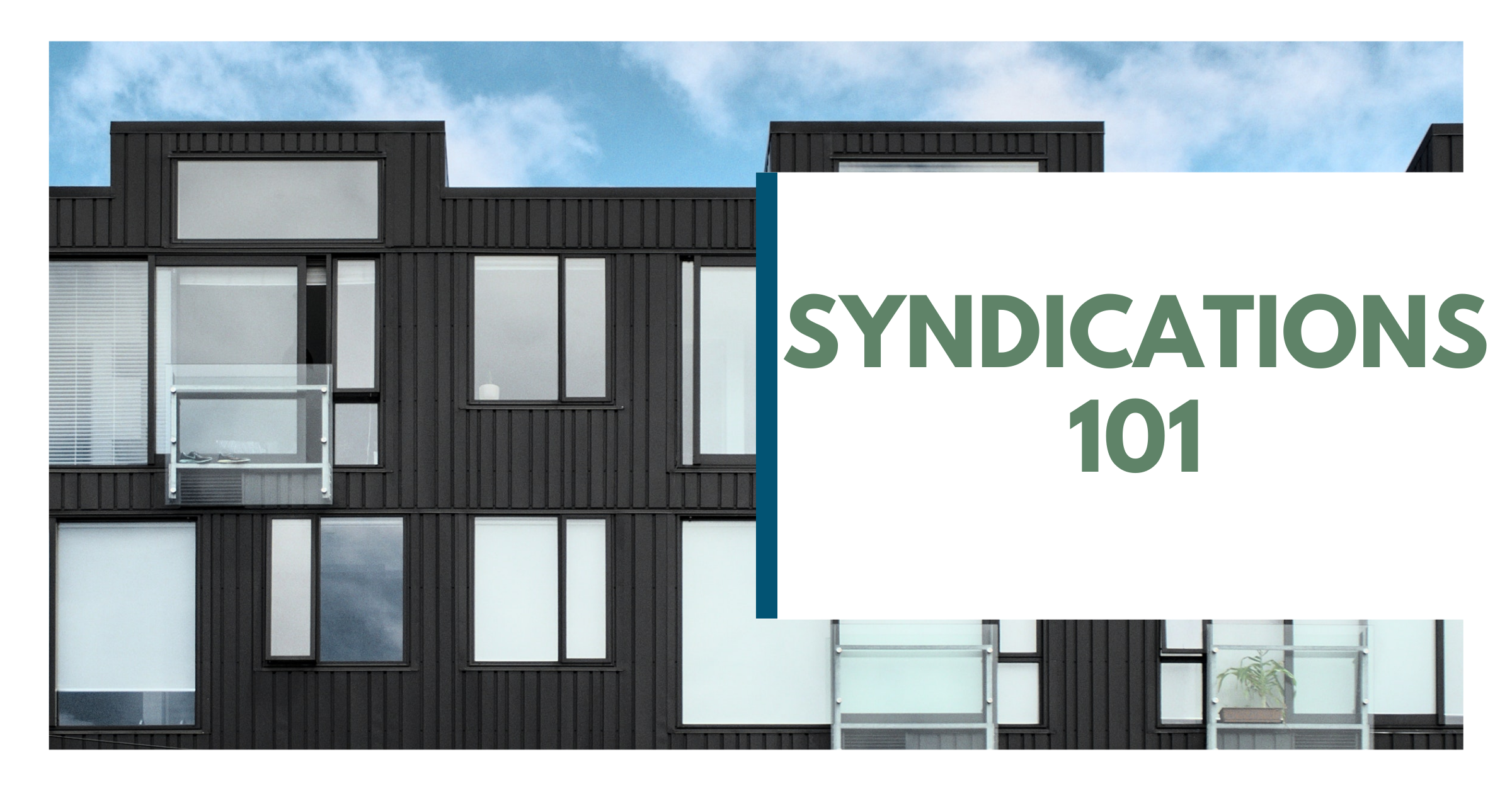Syndications 101 - Learn How Syndications Work and Get Paid
In general, most people we speak with understand what a syndication is. But, for those less familiar, let's still start with that definition. Syndication is run by a professional investor (General Partner-GP) who finds property to acquire, then puts together both debt and equity (down payment, CAPEX, closing cost, etc.) from others (LP-limited Partner). In our case, we usually put in some of our funds as well. In exchange for this effort, the GP gets a piece of the pie.
The Syndication Setup
Here Syndication Generally Works:
Syndicator(GP) finds a property that hits the return metrics. They are the winning bidders that put the deal under contract
The due diligence process begins
GP Selects the appropriate financing option
GP Sets up LLC and PPM(Private Placement Memorandum) documentation from the attorney
GP Approaches possible investors to fund the equity piece in exchange for ownership in the LLC.
Assuming everything goes smoothly with the transaction and the raise, the syndicator closes the deal.
The syndicator then manages the asset and distributes the profits/tax benefits accordingly.
Then GP manages the exit from the property or refinance to hold longer-term
How the LP-Limited Partner Gets Paid:
Usually, investors will get 60-80% of the profits. For example, if you put a quarter of the cash in 80 (LP) -20 (Syndicator) deal, you get 25% x 80% = 20% of the profits or that amount of paper losses from accelerated depreciation.
Additionally, you may find a preferred return between 6 - 9% a year on money invested on some deals. Essentially the LP will get paid first their 6 - 9 % return guaranteed.
If there is not enough return to cover the preferred return; a catch-up would occur in the following years. Usually, when you see a preferred return, you will get a smaller ownership percentage for that guarantee.
Your split can change when specific return metrics are hit, or money is returned through a refinance or sale. This is most commonly described as a waterfall.
How the Syndicator (GP- General Partner) Gets Paid:
Acquisition Fee: For everything that goes into identifying, negotiating, financing, and managing the escrow. This tends to be 1-2 % of the purchase price.
Asset Management Fee: This is for overseeing the management company that does the day-to-day with weekly calls and monthly financial reviews. This also covers other tasks such as renewing insurance, managing larger CAPEX projects, and LP relations. This tends to be 1 - 2% of gross income.
Refi Financing Fee: You will sometimes see GP's charging a fee for accommodating the work that goes into doing a refinance. That tends to be about 1%. Though here at JB2, we don't usually charge that.
Profit Share: Then the GP will receive their profit share for the sweat equity. Profit share is usually is 20-40% depending on the deal.
Ultimately, there are many ways that syndications can be structured. What we have shared here are just some of the more common ways we see syndications structured. Here at JB2, we usually do an 80/20 split, 1 - 2 % acquisition fee, 1 - 2% asset management fee, and ownership split change at refinance as long as we are hitting a certain minimum return for our investors. This how we found to keep us the most aligned with our investors and be able to hold long-term.
You also have some GP’s that raise a fund to invest in a portfolio of buildings. The downside is that you have less control because you will not be able to analyze deal by deal. The upside would be you could diversify over more deals. However, you can manually do that by just investing in a few deals instead of everything in one.
The goal of these structures is the alignment of incentives of the GP/LP for the common good. We always put the best of our investors before our own. We understand what it takes to create that capital. Though for example, the acquisition/asset management fees mainly go to the cost of running the business. The idea is for this to be a symbiotic relationship where all win and prosper. In that light, all will grow tremendously and harmoniously.

